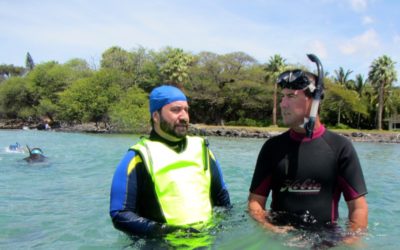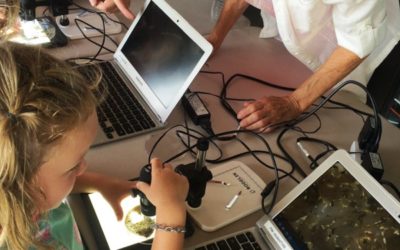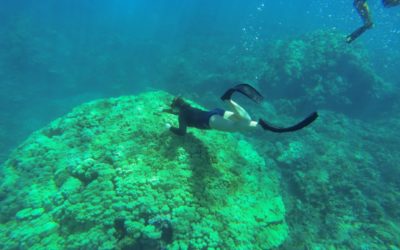Found along the west-facing shores of Maui, the reef at Olowalu is a one-thousand acre jewel, home to the oldest coral in the main Hawaiian Islands. Olowalu is often referred to as the “Mother Reef” because coral larvae from Olowalu seed reefs of West Maui, Molokai, and Lanai. Olowalu reef is so special that it has recently been designated a Mission Blue Hope Spot by the legendary oceanographer, Dr. Sylvia Earle.
But Olowalu’s reef is in trouble. The ancient coral located here is nearly 90% dead and nearly 50% of the reefs suffered bleaching in 2015. Sediment from land has harmed much of the inner reef.
Overall, this study will provide a picture of how stressors affect individual corals as well as populations of corals. It will help provide important information for more effective management of Maui’s coral reefs.
Studying core samples from Olowalu’s corals
To better understand the most significant stressors that are causing the reef’s decline, Maui Nui Marine Resource Council, with support from a grant by the Maui County Office of Economic Development, is funding a study of core samples of Olowalu’s corals.
Thirty two core samples, each about 1 cm wide, will be harvested from massive Porites (lobe corals) selected at random from the areas of Olowalu and nearby Polanui. These core samples will allow scientists to look back weeks, months (or possibly even years or decades) to analyze the corals’ protein expression and DNA over time. Protein expression and genetic variation are diagnostic tools for identifying the key stressors and the response of corals to these stressors.
Identifying the best strains for restoration projects
This study will also help scientists identify which genetic strains of Olowalu’s corals are most resistant to stressors. With this knowledge, scientists can choose the most resistant corals to grow in the laboratory for use in future restoration projects — an important consideration in this time of climate change.
Understanding contaminants and their impact on corals
The scientists will also perform controlled contaminant exposure experiments to determine the thresholds at which contaminants cause negative responses in corals. This data will be used to help managers identify levels for inclusion in updated water quality standards, such as pesticides of concern found in Maui’s coastal waters from watershed discharges.
The researchers
This study is being performed by Dr. Bob Richmond, Director, UH Manoa Kewalo Marine Lab, with Dr. Kaho Tisthammer and graduate students from the Kewalo lab.
Timing
This work will begin in February 2018





